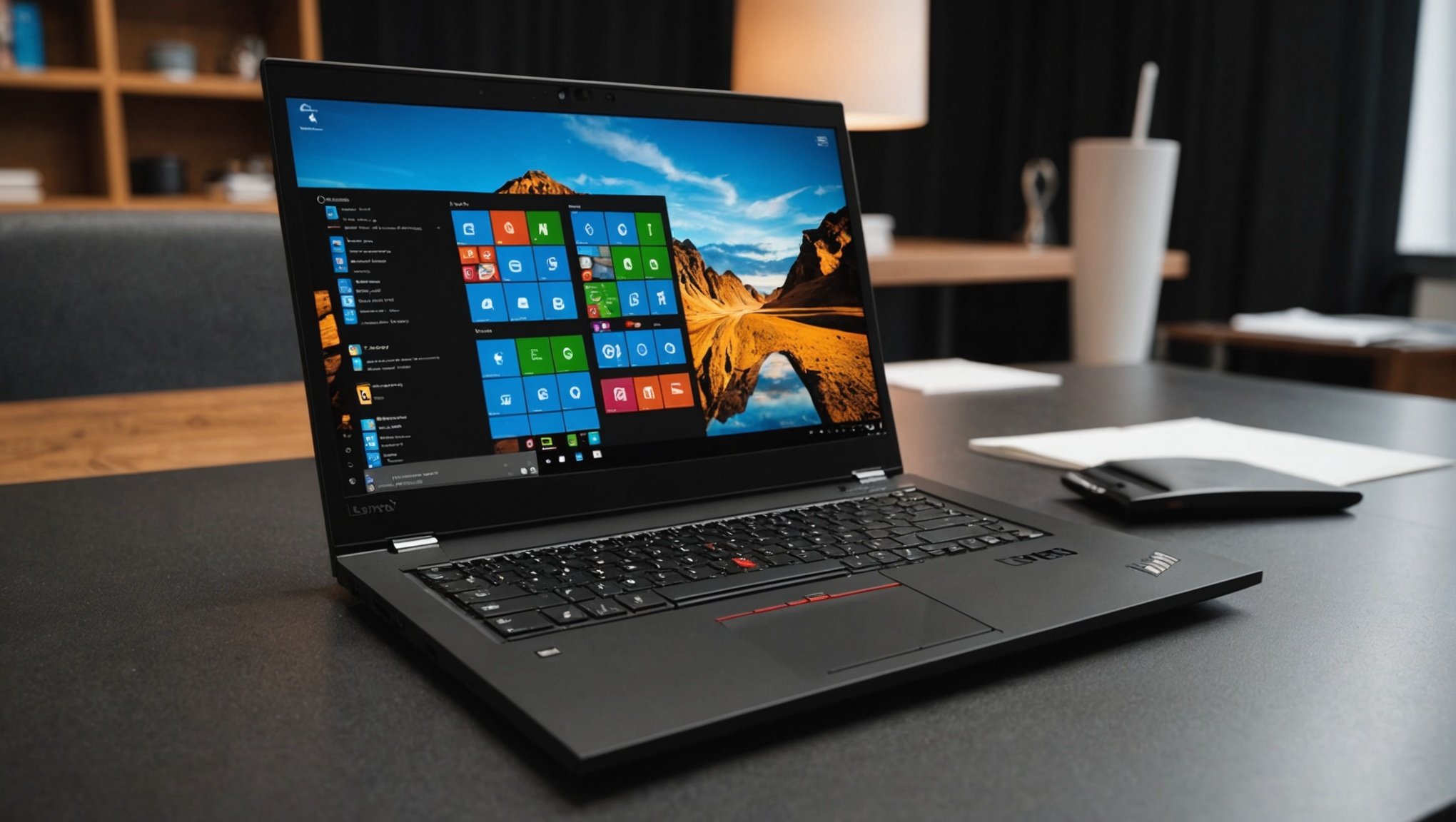Unlock the full potential of your Lenovo ThinkPad P52 for machine learning. Tailoring your setup can drastically enhance model training efficiency. From maximizing hardware capabilities to optimizing software configurations, each adjustment contributes to a seamless experience. Discover valuable tips and tricks that empower you to accelerate your workflows, paving the way for innovative solutions in your machine learning projects. Embrace the journey of mastering machine learning with confidence and ease.
Optimizing Hardware for Machine Learning on Lenovo ThinkPad P52
Optimizing your Lenovo ThinkPad P52 for machine learning can significantly enhance performance. To achieve this, consider the following hardware configurations:
Recommended Hardware Configurations
For optimal machine learning performance, a robust setup is essential. The ThinkPad P52 supports up to 128GB of RAM. Increasing RAM ensures smoother processing and better handling of large datasets. Additionally, upgrading to an SSD with higher storage capacity can improve data retrieval speeds, crucial for efficient model training.
Upgrading RAM and Storage
When upgrading, prioritize expanding your RAM. This enhances the ability to manage complex computations and large-scale models effectively. Pair this with a high-capacity SSD to facilitate faster read/write operations, reducing bottlenecks during data processing.
This might interest you : Mastering Adobe Lightroom: Essential Configuration Tips for Your HP Envy 15 to Enhance Photo Editing Productivity
Cooling Solutions
Intensive training sessions can cause overheating, affecting performance. Implementing effective cooling solutions is vital. Consider investing in a cooling pad or external fan to maintain optimal temperatures. The ThinkPad P52 is designed with a dual-fan system, but additional cooling can prevent thermal throttling, ensuring consistent performance.
By focusing on these hardware optimization strategies, your Lenovo ThinkPad P52 can deliver superior machine learning capabilities, enabling efficient and reliable model training.
Software Setup for Machine Learning
Setting up your Lenovo ThinkPad P52 with the right software installation is crucial for maximizing its machine learning capabilities.
Essential Software Tools for Machine Learning
To begin, install essential machine learning frameworks like TensorFlow and PyTorch. These frameworks are foundational for developing and training models. TensorFlow is known for its flexibility and scalability, while PyTorch offers dynamic computation graphs, making debugging easier. Both are compatible with the ThinkPad P52's hardware, allowing efficient use of resources.
Installing and Configuring TensorFlow and PyTorch
Begin by installing Python, as it's the primary language for these frameworks. Use package managers like pip or conda for installing TensorFlow and PyTorch. Ensure you download the versions compatible with your system's GPU to leverage hardware acceleration. Once installed, configure the frameworks by setting environment variables and verifying installations through test scripts.
Setting Up a Virtual Environment for Project Isolation
Creating a virtual environment is vital for managing dependencies and avoiding conflicts between projects. Use tools like venv or conda to set up isolated environments. This allows you to maintain different library versions and dependencies for each project, ensuring a clean and organized workflow. A virtual environment also simplifies the process of replicating setups across different machines or collaborators.
Performance Benchmarking and Monitoring
To maximize the Lenovo ThinkPad P52's machine learning capabilities, understanding its performance through benchmarking and monitoring is essential.
Tools for Benchmarking Machine Learning Performance
Utilize tools like Geekbench and PassMark for performance benchmarking. These tools provide insights into the CPU and GPU capabilities, helping you understand how well your system can handle machine learning tasks. For more specific machine learning benchmarks, use MLPerf, which evaluates the speed and efficiency of various models on your hardware.
Monitoring System Resources During Model Training
Effective system monitoring is crucial during model training. Tools like Task Manager or third-party software such as HWMonitor can track CPU, GPU, and memory usage in real-time. This helps identify resource-intensive processes and potential bottlenecks. Monitoring allows you to adjust workloads, ensuring efficient resource allocation and preventing system overload.
Analyzing Results to Identify Bottlenecks and Optimize Processes
After gathering data from benchmarking and monitoring, analyze the results to pinpoint bottlenecks. Is the CPU maxing out, or is the RAM insufficient? Address these issues by reallocating resources or upgrading hardware components. This analysis aids in optimizing processes, ensuring your ThinkPad P52 runs machine learning tasks smoothly and efficiently.
Troubleshooting Common Issues
Understanding and addressing common issues can ensure your Lenovo ThinkPad P52 operates smoothly for machine learning tasks.
Identifying and Resolving Hardware-Related Problems
Hardware issues can significantly impact performance. Common problems include overheating and connectivity issues. For overheating, ensure the cooling system is functioning correctly. If the device runs hot, check for dust accumulation in fans and vents and clean them. For connectivity issues, verify that all cables and ports are secure. If problems persist, updating drivers may resolve compatibility issues.
Software Conflicts and How to Address Them
Software conflicts can arise from incompatible applications or outdated software. To troubleshoot, start by identifying conflicting programs. Uninstall or update these applications to their latest versions. If issues continue, consider rolling back recent updates or using system restore to revert to a stable state. Regularly updating your operating system and software can prevent these conflicts.
Best Practices for Maintaining System Performance
Maintaining optimal performance involves regular system maintenance. Implement these practices:
- Keep drivers and software updated: This ensures compatibility and security.
- Regularly clean hardware components: Prevents overheating and hardware failure.
- Monitor system resources: Use tools to check CPU and memory usage, adjusting as necessary.
By following these guidelines, your ThinkPad P52 will remain efficient and reliable.
Best Practices for Effective Model Training
To enhance model training techniques on your Lenovo ThinkPad P52, adopting efficient data handling and preprocessing methods is crucial. Begin by cleaning and normalizing your dataset to ensure consistency. This reduces noise and enhances model accuracy. Use tools like Pandas for data manipulation and Scikit-learn for preprocessing to streamline this process.
Strategies for Reducing Training Time
Reducing training time is a key aspect of machine learning best practices. Implement techniques like batch processing and parallel computing. Batch processing divides data into smaller subsets, enabling quicker iterations. Parallel computing leverages multiple CPU cores, speeding up computations. Use libraries like TensorFlow to facilitate these processes effectively.
Utilizing Cloud Resources and Local Resources Effectively
Balancing local and cloud resources is essential for efficient model training. While local resources like the ThinkPad P52 offer convenience, cloud platforms such as AWS or Google Cloud provide scalability. Utilize cloud services for heavy computations, freeing local resources for other tasks. This hybrid approach optimizes performance and cost-efficiency.
By integrating these strategies, you can improve model training efficiency, making the most of your Lenovo ThinkPad P52's capabilities.











